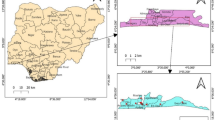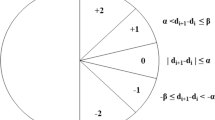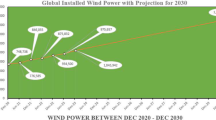Abstract
Generator rotor angle oscillations can be caused by sudden changes in its mechanical power input or its electrical power output. When dampening or synchronizing torque is inadequate, rotor angle instability occurs, resulting in an increase in rotor angle, loss of synchronism, or oscillatory swings of the rotor angle with increasing amplitude. To this end, in this work, we offer a novel two-stage approach for predicting rotor angle stability following a large disturbance. The process begins with the creation of a database of dynamic simulation scenarios. This collection contains a wide set of stable and unstable rotor angle trajectories derived from different fault simulations. Then, the fuzzy c-means (FCM) clustering algorithm is utilized to put the sampled data of rotor angles with the highest degree of similarity in the same cluster. Angle sets generated by FCM are used to train the adaptive neuro-fuzzy inference system (ANFIS). Finally, the trained ANFIS is used to predict the future rotor angle stability situation of generators. In addition, a stability index is suggested in this article, which will assist ANFIS in more accurately predicting the stability condition. The efficiency of the proposed method is tested on the IEEE 39-bus system. The obtained results from simulations confirm that the proposed strategy can correctly predict the rotor angle instability or stability situation of generators in a few cycles after fault clearance.

















Similar content being viewed by others
References
Das S, Panigrahi BK (2019) Prediction and control of transient stability using system integrity protection schemes. IET Gener Transm Distrib 13(8):1247–1254
Tziouvaras DA, Hou D (2004) Out-of-step protection fundamentals and advancements. In: 57th Annual conference for protective relay engineers, 2004, College Station, TX, USA. IEEE, pp 282–307
Amjady N, Majedi SF (2007) Transient stability prediction by a hybrid intelligent system. IEEE Trans Power Syst 22(3):1275–1283
Liu C-W, Thorp JS (2000) New methods for computing power system dynamic response for real-time transient stability prediction. IEEE Trans Circuits Syst I Fundam Theory Appl 47(3):324–337
Hashiesh F, Mostafa HE, Khatib A-R, Helal I, Mansour MM (2012) An intelligent wide area synchrophasor based system for predicting and mitigating transient instabilities. IEEE Trans Smart Grid 3(2):645–652
Zhang C, Li Y, Yu Z, Tian F (2016) A weighted random forest approach to improve predictive performance for power system transient stability assessment. In: 2016 IEEE PES Asia-Pacific power and energy engineering conference (APPEEC). IEEE, pp 1259–1263
Li Y, Yang Z (2017) Application of EOS-ELM with binary Jaya-based feature selection to real-time transient stability assessment using PMU data. IEEE Access 5:23092–23101
James J, Lam AY, Hill DJ, Li VO (2017) Delay aware intelligent transient stability assessment system. IEEE Access 5:17230–17239
Behdadnia T, Yaslan Y, Genc I (2021) A new method of decision tree based transient stability assessment using hybrid simulation for real-time PMU measurements. IET Gener Transm Distrib. https://doi.org/10.1049/gtd2.12051
Li X, Yang Z, Guo P, Cheng J (2021) An intelligent transient stability assessment framework with continual learning ability. IEEE Trans Ind Inf. https://doi.org/10.1109/TII.2021.3064052
Dietrich K, Latorre JM, Olmos L, Ramos A (2011) Demand response in an isolated system with high wind integration. IEEE Trans Power Syst 27(1):20–29
Anzai Y (2012) Pattern recognition and machine learning. Elsevier, Amsterdam
Alpaydin E (2020) Introduction to machine learning. MIT press, Cambridge
Sobbouhi AR, Vahedi A (2021) Transient stability prediction of power system; a review on methods, classification and considerations. Electr Power Syst Res 190:106853
Gupta A, Gurrala G, Sastry P (2018) An online power system stability monitoring system using convolutional neural networks. IEEE Trans Power Syst 34(2):864–872
Zhuo Z, Du E, Zhang N, Kang C, Xia Q, Wang Z (2019) Incorporating massive scenarios in transmission expansion planning with high renewable energy penetration. IEEE Trans Power Syst 35(2):1061–1074
Sobbouhi AR, Vahedi A (2021) Transient stability improvement based on out-of-step prediction. Electr Power Syst Res 194:107108
Huang D, Yang X, Chen S, Meng T (2018) Wide-area measurement system-based model-free approach of post-fault rotor angle trajectory prediction for on-line transient instability detection. IET Gener Transm Distrib 12(10):2425–2435
Gurusinghe DR, Rajapakse AD (2015) Post-disturbance transient stability status prediction using synchrophasor measurements. IEEE Trans Power Syst 31(5):3656–3664
Zhou Y, Wu J, Yu Z, Ji L, Hao L (2016) A hierarchical method for transient stability prediction of power systems using the confidence of a SVM-based ensemble classifier. Energies 9(10):778
Zhu L, Hill DJ, Lu C (2019) Hierarchical deep learning machine for power system online transient stability prediction. IEEE Trans Power Syst 35(3):2399–2411
Geeganage J, Annakkage U, Weekes T, Archer BA (2014) Application of energy-based power system features for dynamic security assessment. IEEE Trans Power Syst 30(4):1957–1965
Tang Y, Li F, Wang Q, Xu Y (2018) Hybrid method for power system transient stability prediction based on two-stage computing resources. IET Gener Transm Distrib 12(8):1697–1703
Hosseini H, Naderi S, Afsharnia S (2019) New approach to transient stability prediction of power systems in wide area measurement systems based on multiple-criteria decision making theory. IET Gener Transm Distrib 13(21):4960–4967
Sharifian A, Sharifian S (2015) A new power system transient stability assessment method based on Type-2 fuzzy neural network estimation. Int J Electr Power Energy Syst 64:71–87
Yan R, Geng G, Jiang Q, Li Y (2019) Fast transient stability batch assessment using cascaded convolutional neural networks. IEEE Trans Power Syst 34(4):2802–2813
Arefi M, Chowdhury B (2017) Post-fault transient stability status prediction using Grey Wolf and Particle Swarm Optimization. In: SoutheastCon 2017, Charlotte, NC, USA. IEEE, pp 1–8
Frimpong EA, Okyere PY, Asumadu J (2017) Prediction of transient stability status using Walsh-Hadamard transform and support vector machine. In: 2017 IEEE PES PowerAfrica, Accra, Ghana. IEEE, pp 301–306
Abedini M, Davarpanah M, Sanaye-Pasand M, Hashemi SM, Iravani R (2017) Generator out-of-step prediction based on faster-than-real-time analysis: concepts and applications. IEEE Trans Power Syst 33(4):4563–4573
Mazhari SM, Safari N, Chung C, Kamwa I (2018) A hybrid fault cluster and thévenin equivalent based framework for rotor angle stability prediction. IEEE Trans Power Syst 33(5):5594–5603
Rajapakse AD, Gomez F, Nanayakkara K, Crossley PA, Terzija VV (2009) Rotor angle instability prediction using post-disturbance voltage trajectories. IEEE Trans Power Syst 25(2):947–956
Abdul Wahab NI, Mohamed A (2012) Area-based COI-referred rotor angle index for transient stability assessment and control of power systems. Abstr Appl Anal. https://doi.org/10.1155/2012/410461
Liao TW (2005) Clustering of time series data—a survey. Pattern Recogn 38(11):1857–1874
Abdulshahed AM, Longstaff AP, Fletcher S (2015) The application of ANFIS prediction models for thermal error compensation on CNC machine tools. Appl Soft Comput 27:158–168
Kar S, Das S, Ghosh PK (2014) Applications of neuro fuzzy systems: A brief review and future outline. Appl Soft Comput 15:243–259
Karahoca A, Karahoca D (2011) GSM churn management by using fuzzy c-means clustering and adaptive neuro fuzzy inference system. Expert Syst Appl 38(3):1814–1822
Pai M (2012) Energy function analysis for power system stability. Springer Science & Business Media, Berlin
Milano F, Vanfretti L, Morataya JC (2008) An open source power system virtual laboratory: the PSAT case and experience. IEEE Trans Educ 51(1):17–23
Chandra A, Pradhan AK (2020) Model-free angle stability assessment using wide area measurements. Int J Electr Power Energy Syst 120:105972
Author information
Authors and Affiliations
Contributions
All authors contribute equally to this manuscript.
Corresponding author
Ethics declarations
Conflict of interest
The authors declare no conflict of interests.
Additional information
Publisher's Note
Springer Nature remains neutral with regard to jurisdictional claims in published maps and institutional affiliations.
Rights and permissions
Springer Nature or its licensor (e.g. a society or other partner) holds exclusive rights to this article under a publishing agreement with the author(s) or other rightsholder(s); author self-archiving of the accepted manuscript version of this article is solely governed by the terms of such publishing agreement and applicable law.
About this article
Cite this article
Amini, S., Ghasemi, S., Azadimoshfegh, I. et al. A two-stage strategy for generator rotor angle stability prediction using the adaptive neuro-fuzzy inference system. Electr Eng 105, 2871–2887 (2023). https://doi.org/10.1007/s00202-023-01827-1
Received:
Accepted:
Published:
Issue Date:
DOI: https://doi.org/10.1007/s00202-023-01827-1




